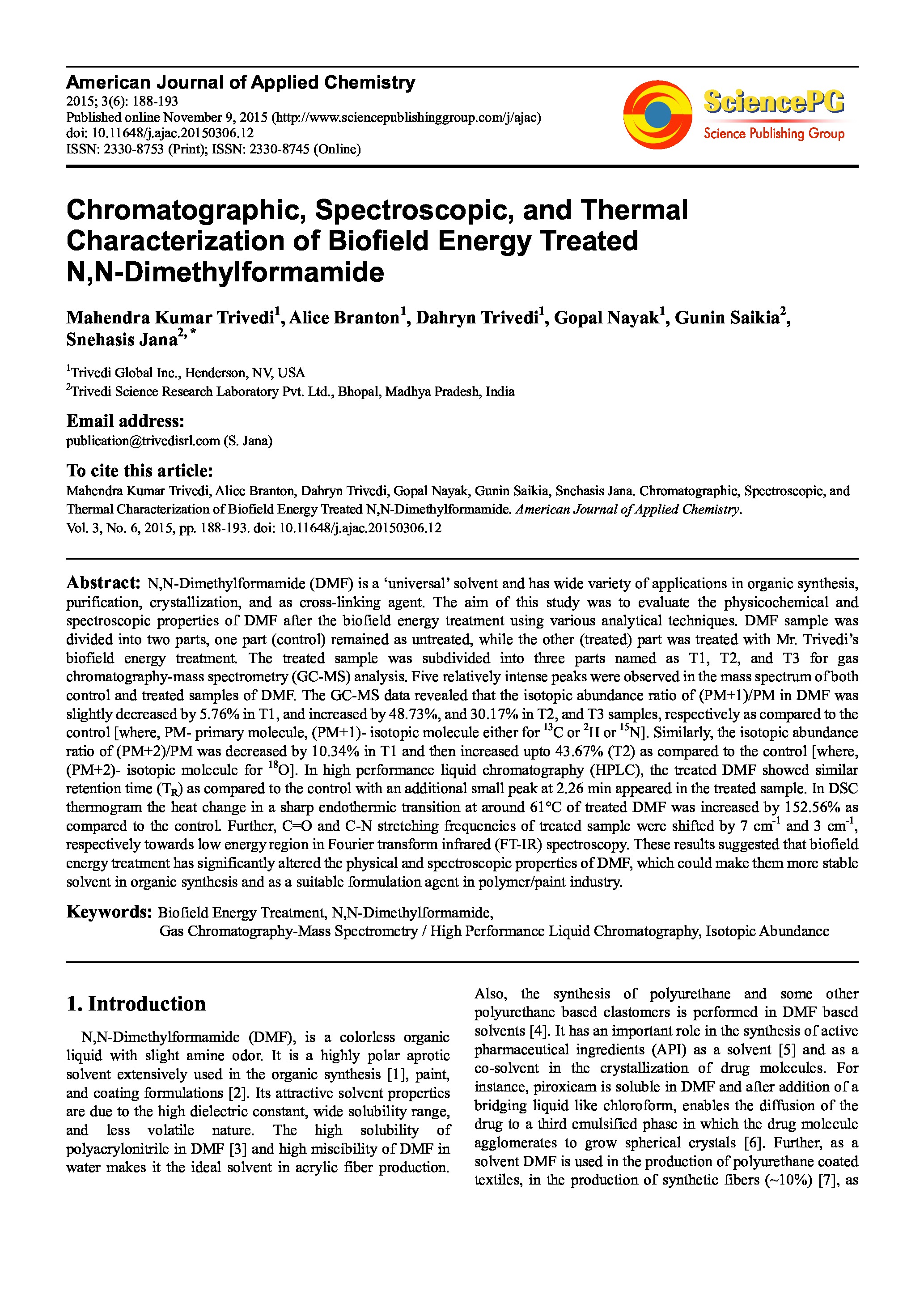Chromatographic, Spectroscopic, and Thermal Characterization of Biofield Energy Treated N,N-Dimethylformamide
Affiliation
Trivedi Global Inc.; Trivedi Science Research Laboratory Pvt. Ltd.
Main category
Natural Sciences (Analytical Chemistry, Method Development (Chemistr)
Abstract
N,N-Dimethylformamide (DMF) is a ‘universal’ solvent and has wide variety of applications in organic synthesis, purification, crystallization, and as cross-linking agent. The aim of this study was to evaluate the physicochemical and spectroscopic properties of DMF after the biofield energy treatment using various analytical techniques. DMF sample was divided into two parts, one part (control) remained as untreated, while the other (treated) part was treated with Mr. Trivedi’s biofield energy treatment. The treated sample was subdivided into three parts named as T1, T2, and T3 for gas chromatography-mass spectrometry (GC-MS) analysis. Five relatively intense peaks were observed in the mass spectrum of both control and treated samples of DMF. The GC-MS data revealed that the isotopic abundance ratio of (PM+1)/PM in DMF was slightly decreased by 5.76% in T1, and increased by 48.73%, and 30.17% in T2, and T3 samples, respectively as compared to the control [where, PM- primary molecule, (PM+1)- isotopic molecule either for 13C or 2H or 15N]. Similarly, the isotopic abundance ratio of (PM+2)/PM was decreased by 10.34% in T1 and then increased upto 43.67% (T2) as compared to the control [where, (PM+2)- isotopic molecule for 18O]. In high performance liquid chromatography (HPLC), the treated DMF showed similar retention time (TR) as compared to the control with an additional small peak at 2.26 min appeared in the treated sample. In DSC thermogram the heat change in a sharp endothermic transition at around 61°C of treated DMF was increased by 152.56% as compared to the control. Further, C=O and C-N stretching frequencies of treated sample were shifted by 7 cm-1 and 3 cm-1, respectively towards low energy region in Fourier transform infrared (FT-IR) spectroscopy. These results suggested that biofield energy treatment has significantly altered the physical and spectroscopic properties of DMF, which could make them more stable solvent in organic synthesis and as a suitable formulation agent in polymer/paint industry.
DOI
10.18147/smn.2017/paper:453
Do you have problems viewing the pdf-file? Download paper
here
If the paper contains inappropriate content, please
report the paper. You will be redirected to the landing page.
